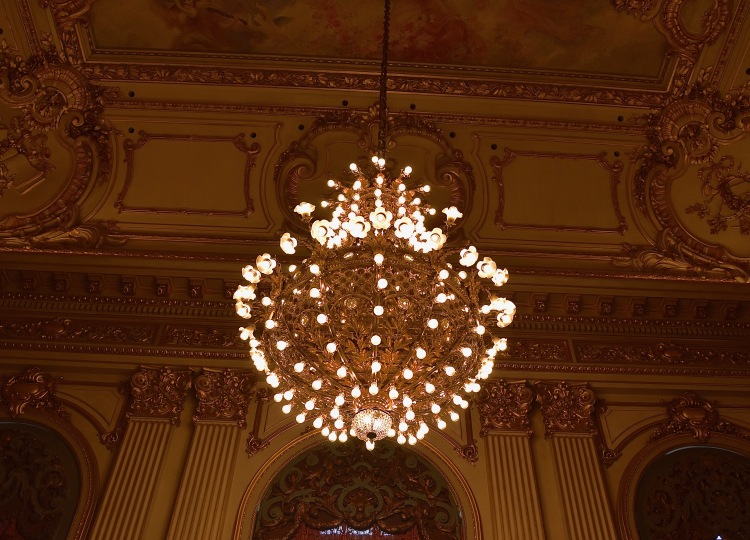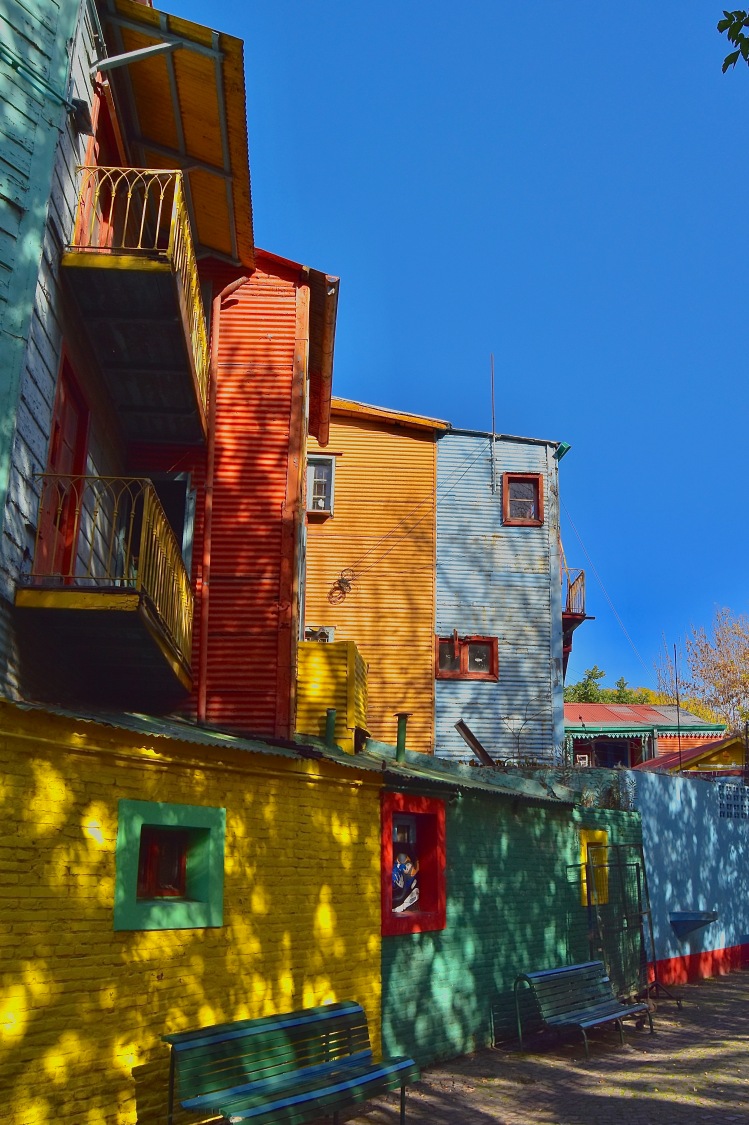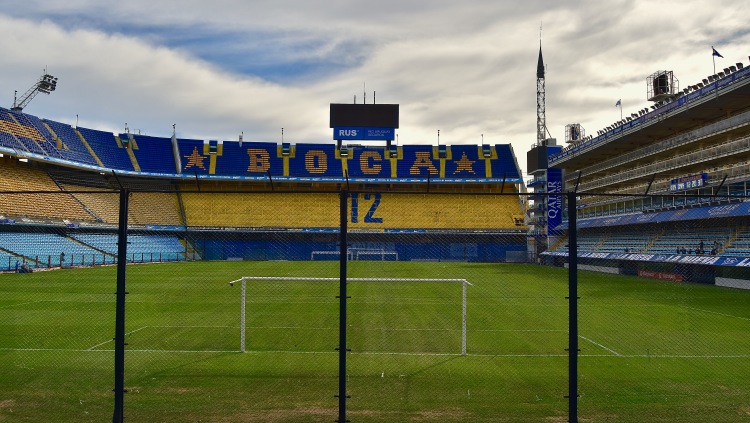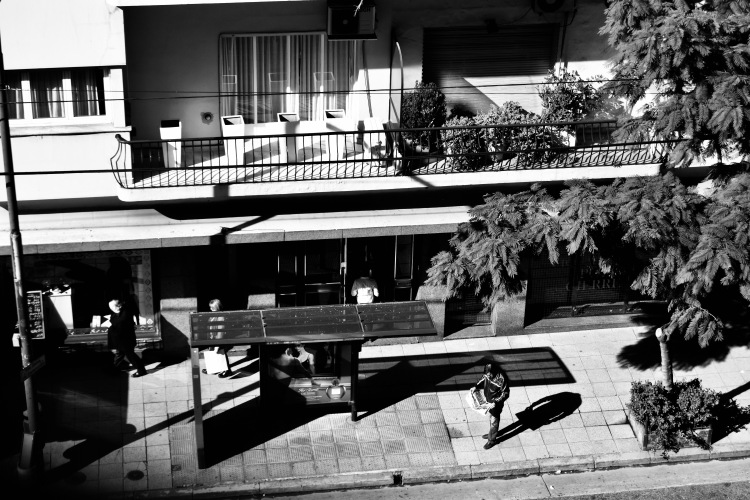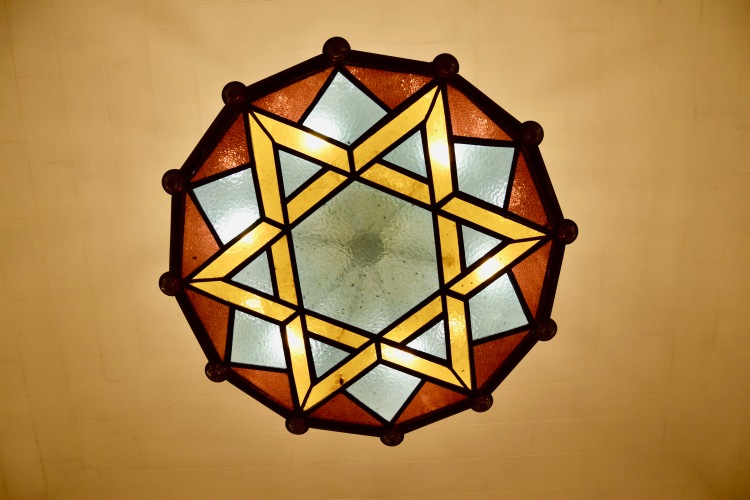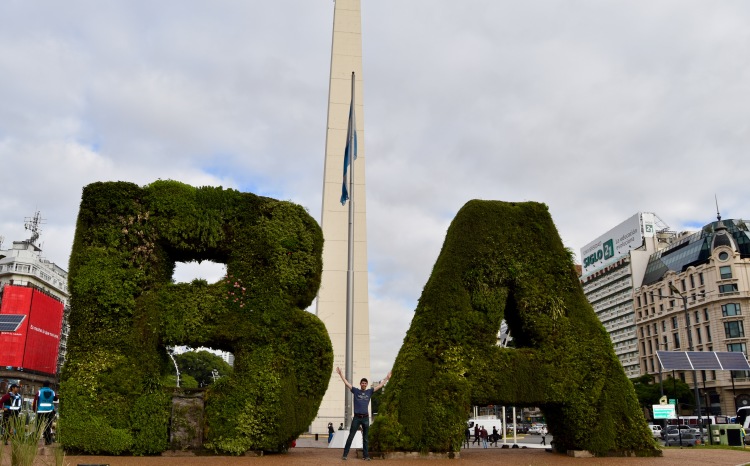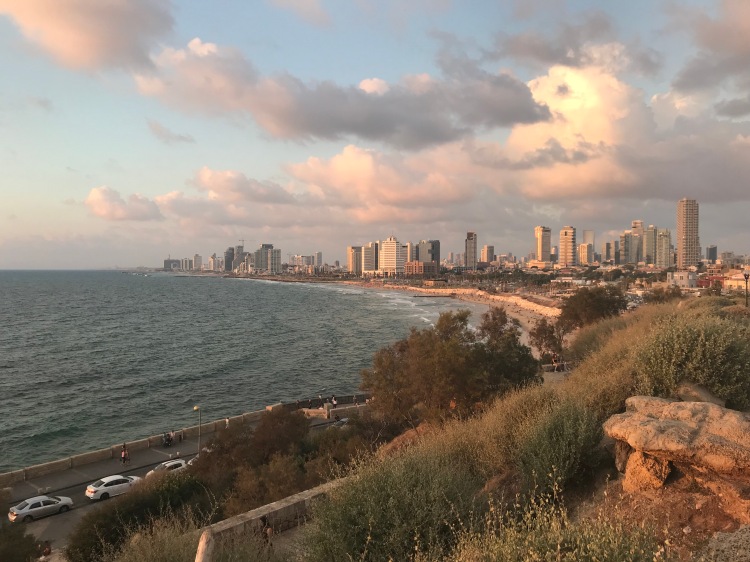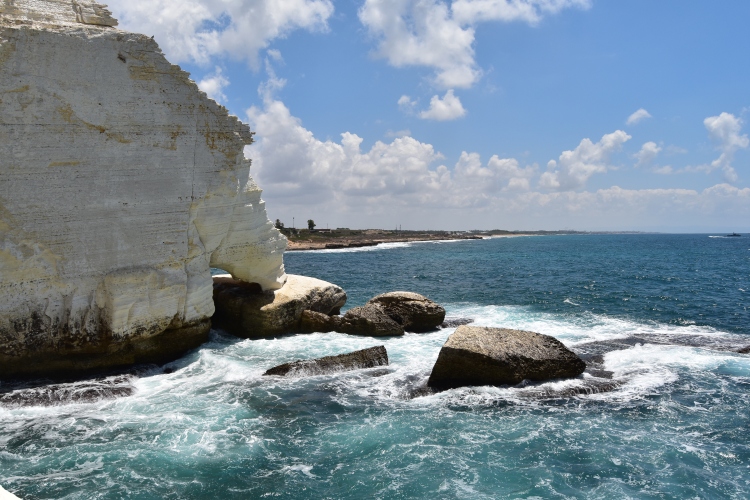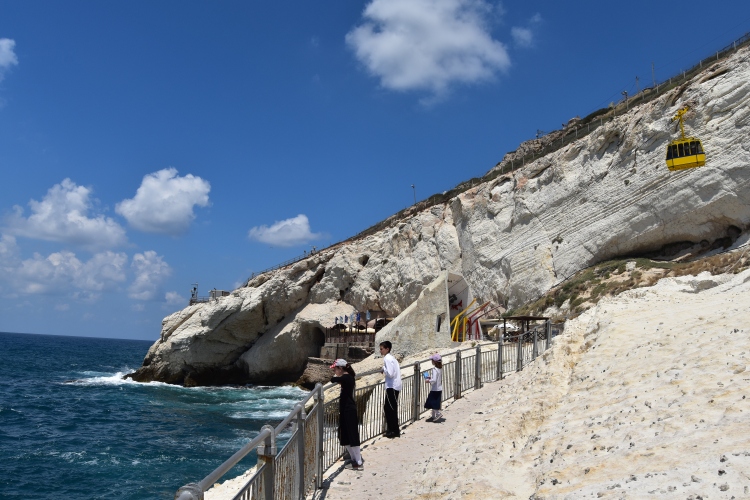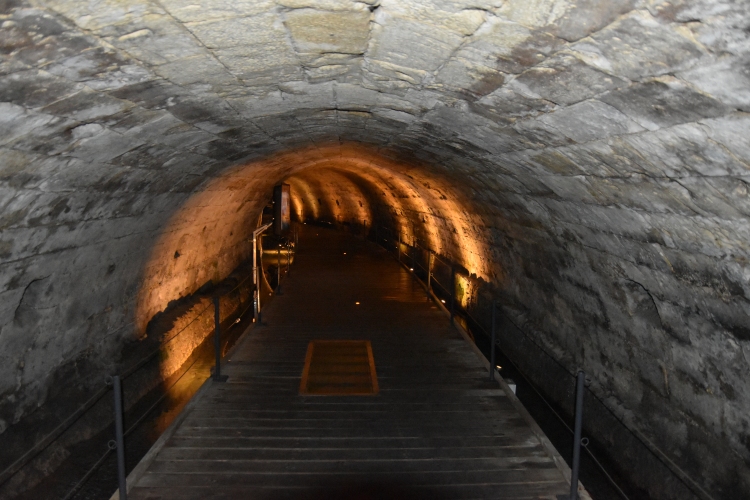Three countries. Three languages. Trés Fronteras. Puerto Iguazú, Argentina is home to 65,000 people, with a downtown so small you can hardly call this place a city. Yet this town is central to the allure of South America. It is home to the national park which bears the same name, and the famous Iguazú Falls.
With all this in mind, let’s begin with the three countries. Puerto Iguazú sits on the Rio Iguazú, quite literally on the northeast tip of Argentina. To the north and west, one will find Paraguay, and to the east, Brazil. The river is the border, and at the edge of town where the river splits in two, Puerto Iguazú has built the Trés Fronteras monument, hosting the flags of the three friendly nations, and a viewpoint from which one can see them all. I visited in the evening as the sun was dipping below the horizon, so I can only claim to have seen it in the dark- though I am sure the daytime view is more spectacular. Due to the lighting, the best photo I have to share is actually from the next morning out my hotel window- not quite at the monument, but all three nations are still clearly visible. On the right hand side of the river: Brazil. At the end, the fork and Paraguayan land are visible. And of course, the land the hotel sits on is Argentinian. One of our guides, Maria, explained that although the Paraguayan town on the other side of the border is closer, in order to get there one must go through Brazil. And to top it all off, both nations require visas for Argentinian citizens to enter. The US and Canada, this border is not.
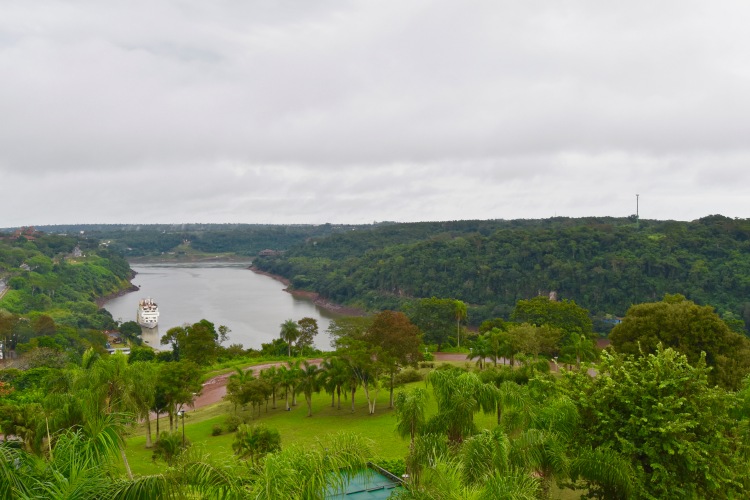
Travel east from town for around 20 minutes, and you will arrive at Parque Nacional Iguazú, the home of the world famous Iguazú Falls. This brings us to the three languages: you see, while Brazil is the only nation in South America which speaks Portuguese, and Argentina obviously officially speaks Spanish, Paraguay is a little different. Here, in this less-touristed, landlocked, bean-shaped nation, the majority of the people speak a language called Guarani. This makes Paraguay the only nation on earth to list a native language as official, and from my research, the only one where a majority of the population speaks the single native language in question. Why is this important, you ask? An important question, given that Argentina hosts 80% of the Falls, and Brazil the other 20%. Iguazú is, as you may have guessed, a Guarani word, meaning “Big Water.” Fitting, as these Falls constitute the largest system of waterfalls in the world: 2.7 kilometers long, with 275 individual cascades crashing down the Rio Iguazú.
Our day here was unfortunately cloudy and somewhat rainy, so I cannot claim to have seen the best views of these Falls. What I can confirm, though, is that this place is awe-inspiring. The walk alone to view the Falls would be enough for me to recommend visitors come see this place. A man-made, metal-grated pathway takes visitors from an open-air, tourist-style train through the rainforest, from island to island, and finally, to the viewpoint known as the Devil’s Throat. This is the most famous of the viewing decks, and allows visitors to look straight down the Falls, to the misty continuation of this fast-moving river. There are multiple other paths visitors can walk, all viewing different areas of the Falls system. I walked only two in total, and can confirm they are spectacular.
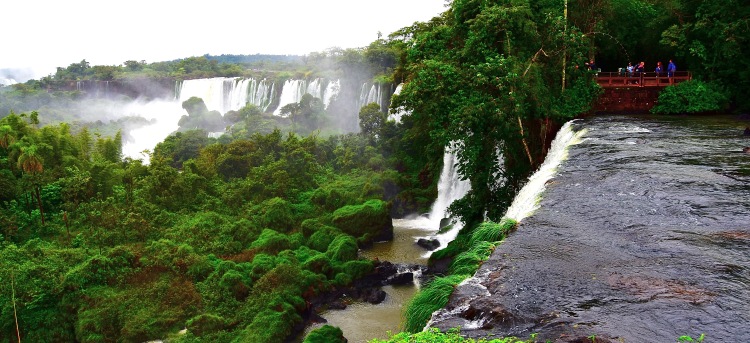
There is one other thing visitors should be wary of: animals, similar to raccoons but with an anteater-esque snout. They are called Coatis, and if they weren’t so aggressive I would almost call them cute. They have become accustomed to humans, and while they sometimes walk the railings of the paths visitors take to the Falls, they are far more common at two of the three train stations in the park. This is because each station has a small shop for snacks, and these animals love stealing food. Case in point: I bought a pack of chocolate wafers, and made the grave error of opening them while waiting for the train. Within seconds, I heard a chorus of squeaks, looked down, and saw a Coati heading for me. As I learned later, a human clapping their hands will scare them away, but I chose to slowly back away while trying to scare it with my feet. This did not work, and one of them even scavenged the floor of our train before finally being forced off. Locals call them pests, and now I know why.
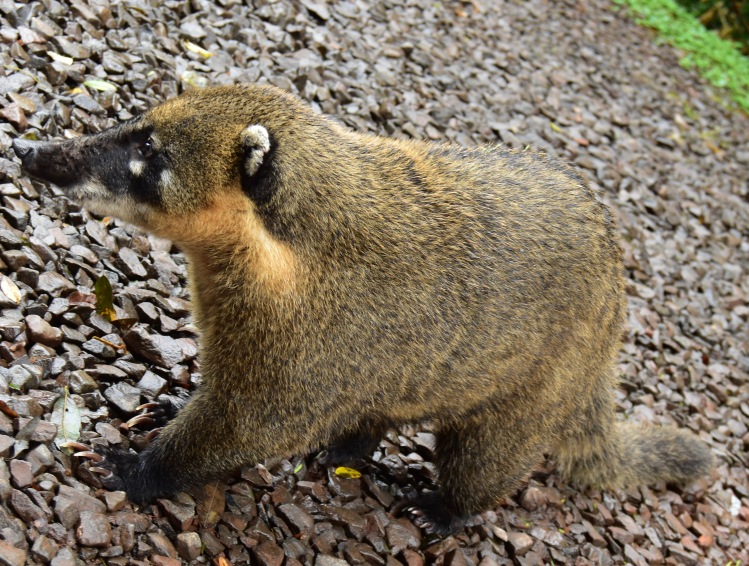
So was the Big Water worth it? Absolutely. Would I prefer to come again, in order to see it in the sun? Also, absolutely. After a day in the jungle, I’ve spent today in Mendoza, near the border with Chile and its capital, Santiago. Here, I’ve been touring the places this city is known best for: wineries, producing Argentina’s signature Malbec reds. Keep a lookout for that post soon (after the effects have wound down, of course), and a wrap-up a few days after I arrive back in the United States. Until then, I’ll leave you the way nearly everyone in this country does: Ciao!

